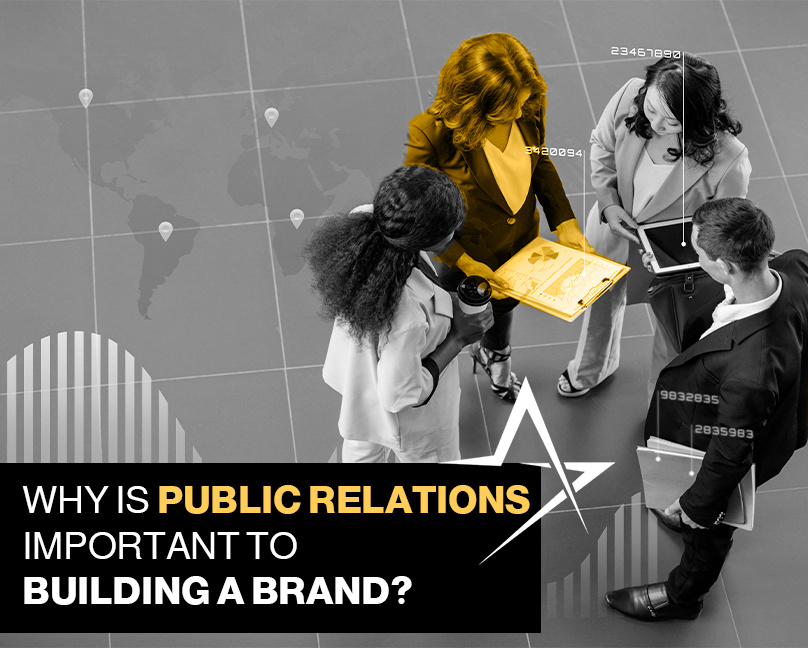Public relations is a vital part of any business, whatever its size or niche. PR helps establish and maintain a good public image and reputation and manage any negative publicity that any business may face.
What is PR?
Public relations (PR) is a strategic communication discipline that focuses on managing and maintaining positive relationships between an organization and its various stakeholders.
The goal of PR is to build, enhance, and protect the reputation of the organization, as well as create a favorable environment for its operations and activities. PR involves the planned and sustained effort to influence public perception and opinion through various communication channels.
8 main aspects of public relations
1# Media Relations
PR professionals work to cultivate relationships with journalists and media outlets. They create and distribute press releases, organize press conferences, and pitch story ideas to secure media coverage.
2# Crisis Communication
PR plays a crucial role in managing and mitigating crises that may impact an organization’s reputation. This involves developing communication strategies to address and respond to negative events or situations.
3# Corporate Communication
PR is responsible for crafting and disseminating key messages about the organization’s mission, values, and activities. This includes internal communication to employees as well as external communication to customers, investors, and the public.
4# Event Management
PR often involves organizing and promoting events to generate positive publicity. This could include product launches, press conferences, or community engagement events.
5# Social Media Management
In the modern era, PR professionals leverage social media platforms to communicate directly with the public, share information, and address concerns. Social media is a powerful tool for building and managing brand reputations.
6# Publicity and Promotion
PR seeks to generate positive publicity for an organization through earned media coverage. This is different from advertising, which involves paid promotional activities.
7# Internal Communication
Ensuring that employees are well-informed and aligned with the organization’s goals is an important aspect of PR. Internal communication contributes to employee morale and a positive workplace culture.
8# Corporate Social Responsibility (CSR)
Many organizations engage in CSR initiatives, and PR plays a role in communicating these efforts to the public. This can enhance the organization’s reputation and demonstrate its commitment to social and environmental responsibility.
Why is public relations important to building a brand?
Building a positive reputation and trust
PR can help build a positive reputation for your business, credibility, and trust with your target audience, enhance your brand’s image, and increase its visibility.
Crisis management
In times of crisis or negative events, effective PR is crucial to managing and mitigating damage to a brand’s reputation with communication strategies, handling media inquiries, and working towards restoring trust and confidence in the brand.
Reinforcing your brand positioning
PR can play a vital role in shaping and reinforcing the image and positioning of a brand in the minds of the target audience by using consistent messaging, storytelling, and highlighting unique selling points for your brand.
The difference between PR, communication, and marketing services
Public relations and marketing are related but distinct fields, and they often work together to create a comprehensive communication strategy for any business. Additionally, communication services are integral to both PR and marketing.
The role of public relations (PR)
– Objective: PR focuses on building and maintaining positive relationships between an organization and its various stakeholders, including the public, media, employees, and investors.
– Activities: PR professionals engage in activities such as media relations, crisis communication, event management, stakeholder engagement, and internal communication.
– Key Emphasis: The emphasis in PR is on reputation management, credibility, and fostering a positive image for the organization.
The role of marketing:
– Objective: Marketing is a broad concept that focuses on promoting products or services, driving sales, and achieving business goals.
– Activities: It encompasses a range of activities such as market research, advertising, product promotion, branding, and sales.
– Key Emphasis: The emphasis in marketing is often on achieving measurable business outcomes, such as increased sales and market share.
The role of communication services
– Role: Communication services are a common thread between PR and marketing, and effective communication is essential for both disciplines to convey messages to their respective audiences.
– Components: It may include elements like content creation, messaging, storytelling, social media management, and other channels that facilitate the transmission of information.
In Fame, through our PR and communications services, we’ll help your brand grow and stand out in the crowd, which includes:
Content Writing
– Creating articles and well-crafted content that communicate key messages and unique selling points for your brand.
– Creating compelling copy for advertisements, websites, and promotional materials and making sure it’s engaging and informative for attracting the attention of the target audience.
Blogging
– It’s an effective tool for content marketing that helps your brand elevate through storytelling, building a positive image, and showcasing expertise and values.
Communication Strategy
– This strategy outlines how key messages will be communicated to various audiences, ensuring consistency across different channels.
– It identifies the target audience, their interests, needs, and preferences.
– It also defines the brand’s voice and messaging.
Ready to boost your brand’s voice? Let’s start the conversation!


